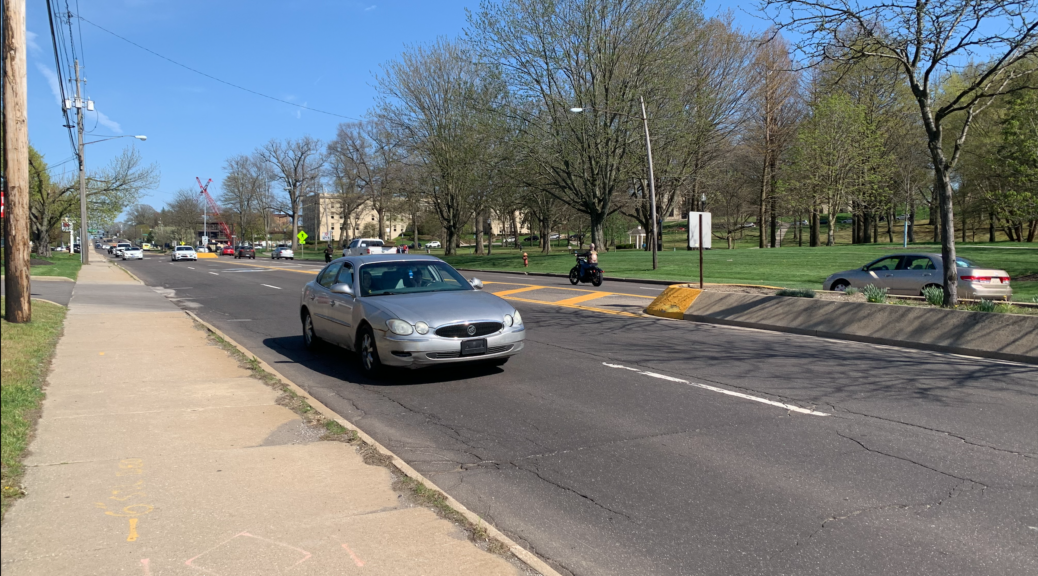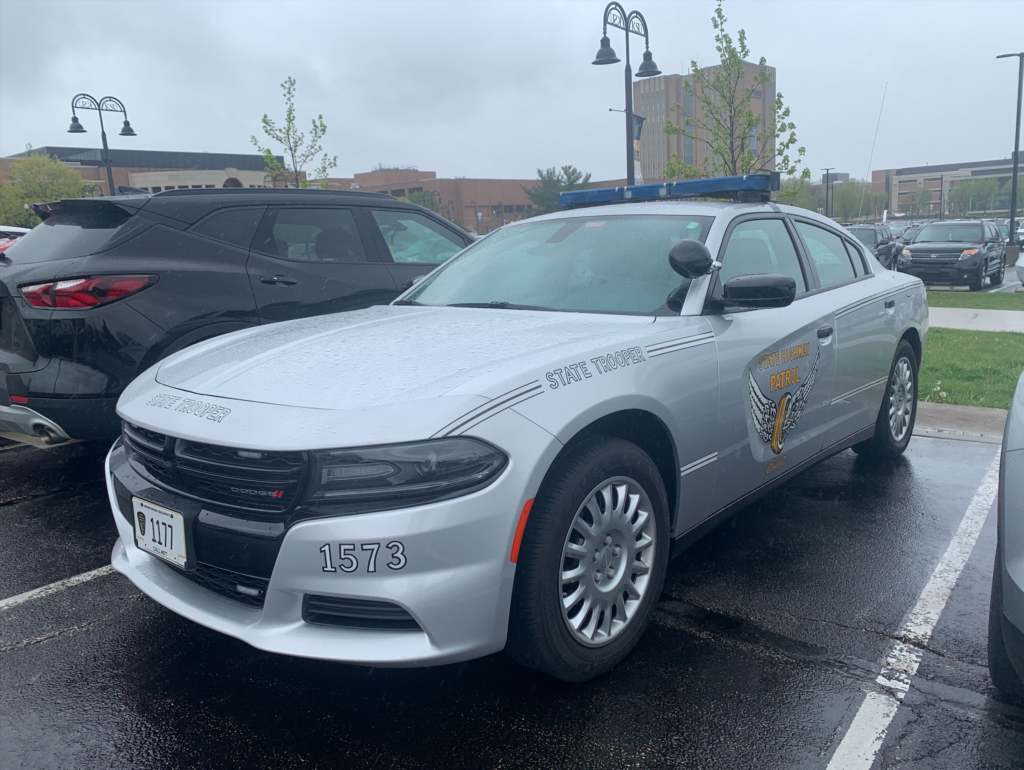
Ohio’s New Distracted Driving Law Goes into Effect
Ohio is hitting the brakes on distracted driving. As of April 14, using or holding a cell phone or electronic device in your hand, lap or other parts of the body while driving in the state is a primary offense.
Drivers can still make phone calls while driving by holding the phone to their ear as long as starting and ending the call requires just one touch. Audio streaming apps and navigational equipment are also permitted under the one touch rule.
Previously, law enforcement could only issue citations for distracted driving if another offense, such as speeding, took place first. That all changes with the new law.

“Really all the officer needs to initiate that traffic stop and make that approach to the vehicle is observing it with their own eyes,” said Ohio State Highway Patrol Sergeant Bridget Matt. “So, if they witnessed someone holding the cellphone in their hand, manually manipulating, whether that be texting or entering an address into a GPS while driving, that would be eligible to initiate a traffic stop.”
Distracted driving has become what some call an epidemic in recent years. The Ohio State Highway Patrol has recorded more than 60,000 distracted driving crashes since 2018. Distracted driving was the leading variable in car crashes across Ohio in 2022 – causing 10,276 crashes, including 35 fatalities.
“Countless studies have proven the risks of using a handheld device while driving, and we continue to see crashes and fatal crashes going up on our roadways,” said Kimberly Schwind, the assistant director and training programs administrator for the Ohio Traffic Safety Office.
Teens are particularly vulnerable to distracted driving, said Julie Eschelbach, a health communications specialist with the Centers for Disease Control and Prevention.
“I have a lot of friends that definitely are on their phone when they’re driving,”
said CJ Brothers, a freshman exploratory major at Kent State University.
“Motor vehicle crashes are the leading cause of death among youth age 14-20,” she said. “Risky driving behavior such as driving while impaired by alcohol or drugs, not wearing a seatbelt and distracted driving contribute to these deaths. Safe driving requires focusing on the road and being ready to respond quickly to the environment.”
The CDC conducts the Youth Risk Behavior Surveillance System, a national, biennial survey that monitors six types of health-risk behaviors that contribute to the leading causes of death and disability among youth and adults. In 2021, the survey found that 42.4% of Ohio high schoolers text or email while driving a car. That figure increased to 65.3% for high school seniors.
“Motor vehicle crashes are the leading cause of death among youth age 14-20,”
said Julie Eschelbach, a health communications specialist with the Centers for Disease Control and Prevention.
Texting while driving, it seems, might just be the holy trinity of distraction.
“There are three types of distraction – visual, manual and cognitive,” Eschelbach said. “All three of these are present when someone is texting while driving because they are looking away from the road, they have at least one hand off the wheel and they are thinking about the text conversation and not the road.”
“That’s the hope behind this law – is that it will save lives,”
said Kimberly Schwind, the assistant director and training programs administrator for the Ohio Traffic Safety Office.
Still, distracted driving won’t disappear overnight – especially among young drivers.
“Personally, I try to refrain from it,” said CJ Brothers, a freshman exploratory major at Kent State. “I’ll put on my music before I start going and then just go to my destination, but I know there’s a lot of people, like I have a lot of friends that definitely are on their phone when they’re driving.”
Schwind said phones have become so culturally ingrained that people are not always thinking about when is the proper time to use them.
“With the proliferation of the cell phone, and people using their mobile devices, they’ve become an extension of who we are,” Schwind said. “And people use their devices everywhere, and that includes using them behind the wheel of a vehicle.”
The OTSO, in partnership with the Ohio Department of Public Safety, is launching a campaign encouraging drivers to lock their screen before they “rock the road.” The departments hope to use radio, billboards and television ads to reach drivers in a state where distractions on the road are all too common.
“You have to look at it like a three legged stool,” Schwind said. “So, you need to have an effective law, you need to have strong enforcement and you also have to have an education campaign.”
The Ohio State Highway patrol and local law enforcement will only issue warnings to those who violate the new law until October 5 as part of an educational grace period. After that date, the penalties will be strict.
“We need to take that privilege seriously and make sure that we’re doing so safely,”
said Ohio State Highway Patrol Sergeant Bridget Matt.
First time offenders can receive two points assessed to their license and up to a $150 fine. Penalties increase with repeated offenses and reach as high as $500 and a possible 90-day license suspension. There will be an option to complete an online distracted driving course in lieu of points and a fine for the first offense.
“I think it’s hefty,” Brothers said. “I mean, the first time I could imagine a warning being cool for just being on your phone, but deciding between a $150 ticket or a diversion program is a little outrageous to me.”
Matt said these penalties will make drivers think twice before picking up their phones.
“Operating a motor vehicle is not a right, but it’s a privilege,” she said. “And we need to take that privilege seriously and make sure that we’re doing so safely.”
Schwind said she hopes the new law will resonate with drivers and make Ohio roads safer for everyone.
“When we’re driving, we have a responsibility to not only keep ourselves and those in our vehicle safe, but also all other road users, including people walking and biking,” she said. “So, it’s just really essential that people pay attention and hopefully this new law will help to change that culture and that behavior and save lives. That’s the hope behind this law – is that it will save lives.”